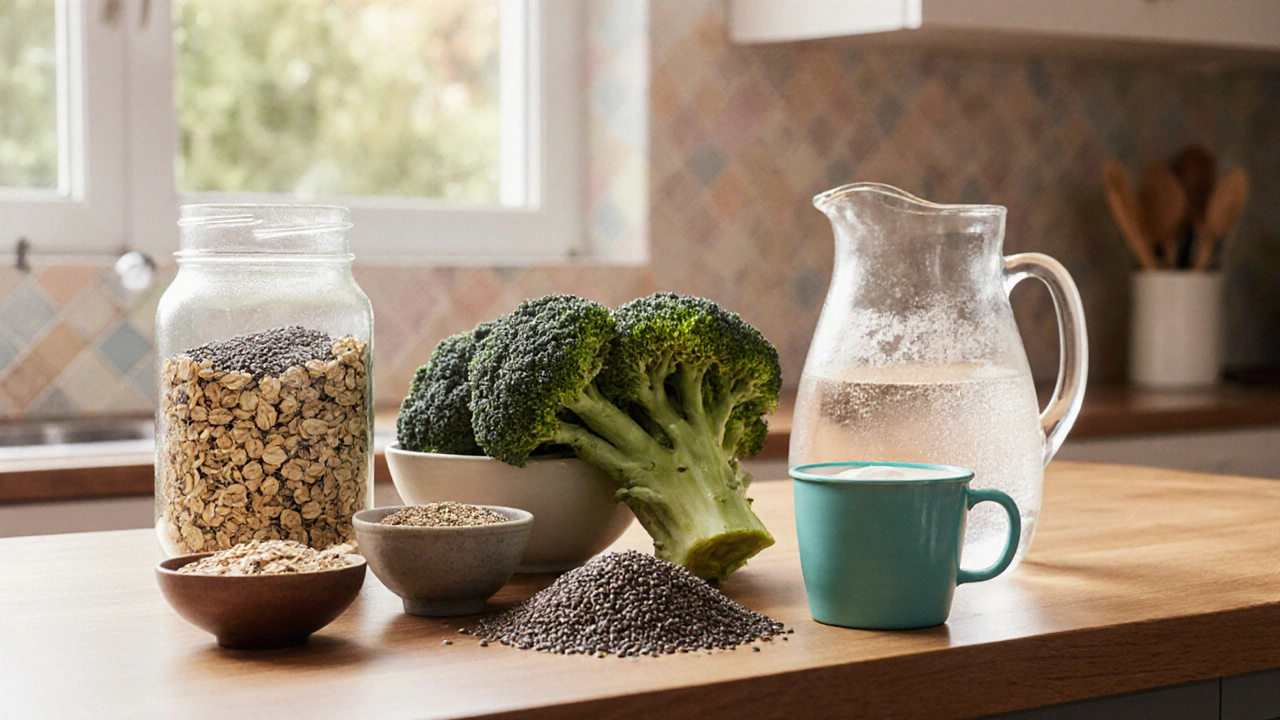
Hemorrhoid‑Friendly Recipes: High‑Fiber Meals for a Healthier Gut
Learn how to create hemorrhoid‑friendly recipes that boost fiber, hydration, and anti‑inflammatory ingredients for a healthier gut and less discomfort.
When talking about Anti-Inflammatory Foods, foods that contain compounds which calm the body's inflammatory response. Also known as anti‑inflammatory diet, they work by providing antioxidants, healthy fats, and phytochemicals that interrupt the pathways that cause swelling and pain. Inflammation, a natural immune reaction that can become chronic when triggered by poor diet or stress is the target, and the right foods act like gentle fire‑extinguishers. This page pulls together the science, the food choices, and the everyday tricks you need to make inflammation a thing of the past.
One of the biggest star players is Omega-3 Fatty Acids, essential fats found in fatty fish, flaxseeds, and walnuts that reduce the production of inflammatory molecules. Studies show that people who eat two servings of salmon or a handful of chia seeds each week see measurable drops in C‑reactive protein, a marker of systemic inflammation. Another powerhouse is Curcumin, the bright yellow compound in turmeric that blocks NF‑kB, a key driver of inflammation. Pairing curcumin with a pinch of black pepper boosts its absorption dramatically, turning a simple spice into a therapeutic ingredient. Together with antioxidants from berries, vitamin C from citrus, and polyphenols from green tea, these nutrients create a multi‑layered defense that targets inflammation from several angles.
Start by swapping out refined carbs for whole grains. Switch white rice for quinoa or brown rice; the extra fiber keeps blood sugar steady, which in turn lowers inflammatory spikes. Add a protein source rich in omega‑3s at least twice a week – think grilled sardines, mackerel, or a plant‑based chia‑seed pudding. Load your plate with colorful vegetables: leafy greens for magnesium, red peppers for vitamin C, and cruciferous veggies like broccoli for sulforaphane, another anti‑inflammatory compound. Don't forget healthy fats: drizzle olive oil over salads, toss avocado slices into soups, or snack on a handful of almonds. Herbs and spices are free flavor boosters – ginger, garlic, and, of course, turmeric every few days can keep the inflammatory pathways quiet without adding calories.
Meal planning becomes easier once you group foods by their anti‑inflammatory action. For a quick breakfast, blend frozen berries, spinach, a scoop of plant‑based protein powder, and a tablespoon of flaxseed oil – you get antioxidants, omega‑3s, and fiber in one shake. Lunch could be a quinoa bowl with roasted sweet potatoes, chickpeas, and a turmeric‑lemon dressing. Dinner ideas range from salmon baked with rosemary to a stir‑fry of tofu, bell peppers, and ginger served over brown rice. Snacks are simple too: a piece of dark chocolate (70%+ cocoa) paired with walnuts satisfies cravings while delivering polyphenols and healthy fats. The goal is variety; rotating foods ensures you get a broad spectrum of anti‑inflammatory compounds.
All the tips above set the stage for the deeper dives you’ll find in the articles below. We cover everything from how food allergies can spark gut inflammation to natural supplements like Elemi that support the same pathways. Whether you’re looking for a specific recipe, want to understand the science behind curcumin, or need a quick guide to buying affordable generic meds that won’t derail your diet, the collection below has you covered. Keep reading to explore detailed strategies, real‑world case studies, and actionable advice that will help you turn anti‑inflammatory foods into a lasting habit.

Learn how to create hemorrhoid‑friendly recipes that boost fiber, hydration, and anti‑inflammatory ingredients for a healthier gut and less discomfort.